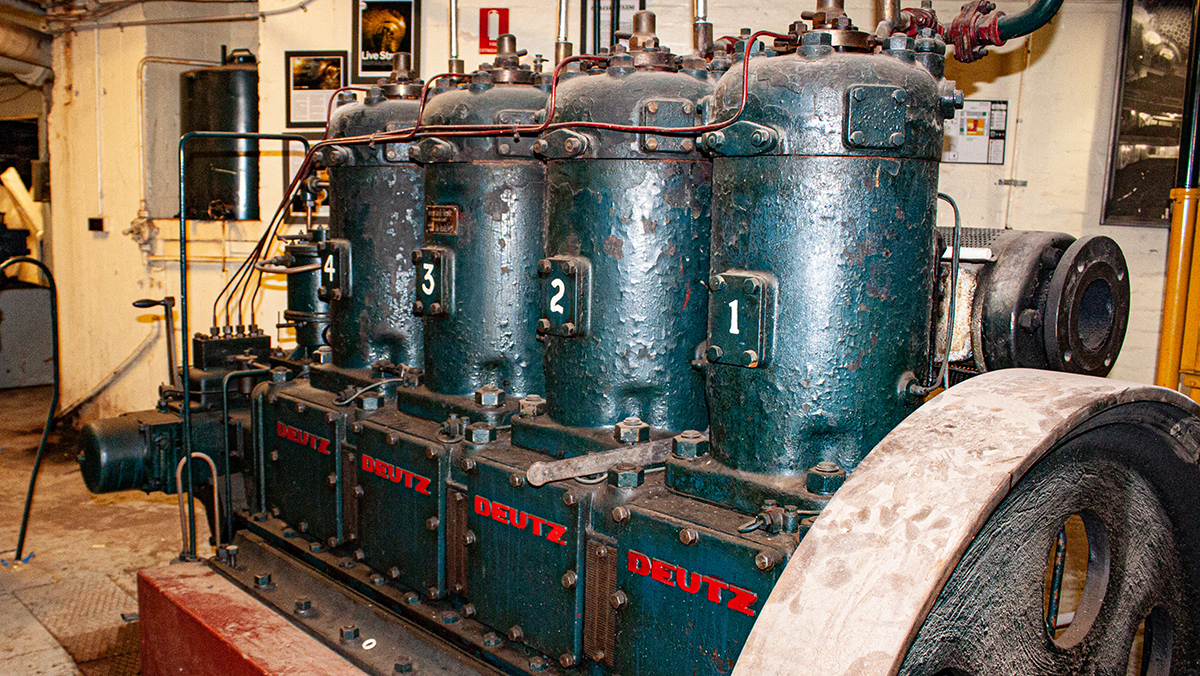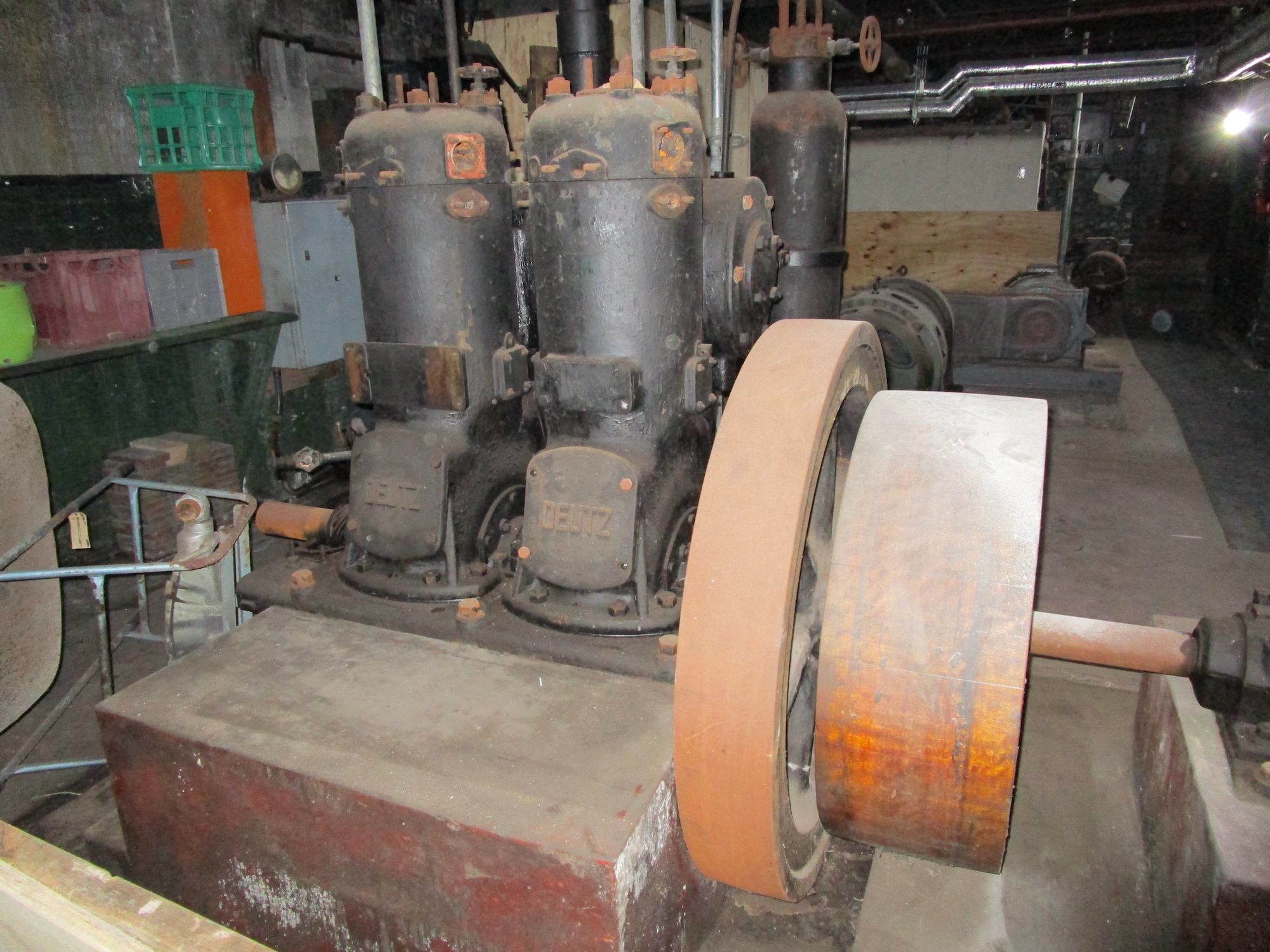

DEUTZ Engine 158762-763 – Palais Theatre. Picture by Rohan Lamb
Our campaign to find the oldest DEUTZ engine in Australia and New Zealand has unearthed several old beauties dating back to 1926.
In our last edition, we brought you the story of a special DEUTZ engine and our quest to see whether it is the oldest in the region.
The German-made 1928 four-cylinder vertical two-stroke diesel engine, rated at 100 horsepower, provided standby power at the former State Theatre in Melbourne.
In 1990, the redundant engine was donated to the Melbourne Steam Traction Engine Club (MSTEC) and relocated to the club’s National Steam Centre in Scoresby.
Our campaign prompted MSTEC historian and archivist Rohan Lamb to list several old DEUTZ engines he has tracked down, dating back to 1926.
This includes the Melbourne engine’s ‘sister’– a four-cylinder 100-horsepower engine (model PMV230, serial number 166647-650) at the State Theatre in Sydney. The Melbourne engine is model PMV230, serial number 166651-654.
Some believe the Sydney State Theatre engine, which is still there, came from a submarine. But Rohan says this is not the case.
“The engine at the State Theatre in Sydney is the sister one to the engine at MSTEC, both built 1928, so the submarine story has been around for a while and is incorrect,” he says.
“The two theatres were built for Union Theatres around the same time using the same architect, with the Melbourne theatre opening in February 1929 and Sydney in June 1929, so many of the same engineers and suppliers were used for both.
“The Sydney engine is the only DEUTZ I know of to still be in its original setting, so it is significant. It also reflects a similar set up of the same engine we have at our museum.”
The other surviving engines, and what is known about them, are:
- a 1926 two-cylinder engine (serial number 158762-763) at the Palais Theatre, St Kilda, Melbourne. This engine is still in-situ in the basement.
- a 1928 two-cylinder 50-horsepower engine (serial number 164479-480, model PMZ230) originally at the Capitol Theatre, Haymarket, Sydney and now preserved by the Sydney Antique Machinery Club Inc. at Clarendon.
“Most of the survivors come from emergency lighting plants installed in theatres where they often remained hidden in the basements,” Rohan says,
“The four known surviving engines from the 1920s were all associated with power supply roles at theatres.”
If you know of an older engine, let us know!
Email: jenny.vu@deutz.com (Wed, Thu, Fri)


